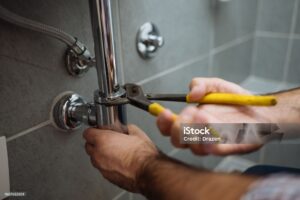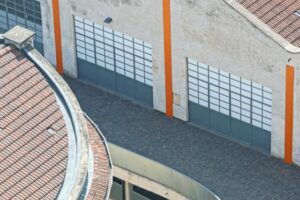
Tackling plumbing issues can be a daunting task for many homeowners. While the spirit of DIY is commendable, it often leads to more problems than solutions. Poorly executed plumbing repairs can escalate into costly disasters. Understanding common pitfalls saves money and ensures a smoother home maintenance experience. With the right knowledge and tips, you can handle your plumbing projects confidently while avoiding these typical errors.
Misjudging Your Skills and Knowledge
A frequent mistake is underestimating the complexity of plumbing tasks. Many DIY enthusiasts assume simple tasks, such as replacing a faucet, are straightforward. However, plumbing involves interconnected systems, and each component must function correctly to prevent issues. For instance, failing to turn off the main water supply before starting can result in significant water damage.
Understanding the tools and techniques required for plumbing jobs is essential. Familiarize yourself with terms like “shut-off valve,” “drain trap,” and “P-trap.” Knowing how these components work will give you a better grasp of the task. When confronted with a plumbing issue, assess whether it requires specific skills or knowledge. If a project seems beyond your expertise, consult a professional.
To avoid this pitfall, take on smaller projects first to build your confidence and skills. Research your project thoroughly, and make sure you possess the necessary knowledge. Resources such as online tutorials can enhance your understanding and prepare you for the job. Moreover, purchasing quality tools and parts from reliable sources like McCombs Supply can improve your DIY experience and ensure you start with the right materials.
Skipping Necessary Preparations
Diving into a plumbing project without proper preparation is another common mistake. Many DIYers start projects without gathering the necessary tools or assessing existing plumbing conditions. This lack of preparation can lead to interruptions and incomplete jobs. For example, starting a pipe replacement without the correct fittings can halt progress.
Preparation is key. Before starting a plumbing project, create a checklist of required materials and tools. Ensure you have everything on hand and in good working condition. Double-check that your pipes have the right size and type of fittings. It’s also wise to look over your existing plumbing to identify potential issues that might arise during your project.
Consider the timing of your project as well. Are you starting on a weekend when you might be interrupted, or are you setting aside a weekday when you can focus? Having a clear timeline and uninterrupted time to work can significantly impact your project’s success.
Ignoring Local Plumbing Codes
Many DIY enthusiasts overlook the importance of adhering to local plumbing codes. Ignoring these regulations can result in unsafe installations and lead to legal complications. For instance, improper venting can cause sewer gases to flow back into your home, posing health risks.
Familiarize yourself with your local plumbing codes and regulations. Check with your local building authority or community workshops for necessary permits and standards. Understanding these requirements ensures your plumbing work’s safety and increases your home’s value. Consulting a licensed plumber can provide clarity and assurance if you’re unsure about compliance.
In addition to codes, consider the environmental impact of your plumbing choices. Select materials and fixtures that comply with regulations and promote sustainability. Energy-efficient appliances can reduce water waste and lower utility bills.
Overlooking Preventative Maintenance
Many homeowners neglect preventative maintenance after completing a DIY project. Over time, minor issues can worsen, leading to significant problems that could have been avoided with simple checks and maintenance routines.
Incorporate preventative measures into your plumbing care. Inspect pipes for leaks, check water pressure, and clean out drains to prevent clogs. Schedule routine maintenance checks for your water heater to ensure it operates efficiently. Establish a maintenance schedule and stick to it; this proactive approach prolongs the lifespan of your plumbing systems.
Another key aspect of preventative maintenance is understanding the seasonal impact on your plumbing. For instance, winter can bring freezing temperatures that may cause pipes to burst. Insulating vulnerable pipes and draining outdoor fixtures before the cold sets in can save significant repair costs.
Choosing Inferior Materials
Opting for low-quality materials in DIY plumbing projects is a frequent error. While cost-saving is often a motivating factor, using subpar materials can lead to failures and additional expenses down the line. Cheaper pipes may corrode faster, leading to leaks.
Investing in quality materials is crucial for the durability and reliability of your plumbing systems. Research reputable brands that are known for longevity and performance. Although the initial investment may be higher, the long-term savings from reduced repairs and replacements will pay off. Quality fixtures enhance performance and contribute to your home’s overall aesthetic.
Consider the compatibility of materials when making your selections. Using the wrong type of pipes or fittings can result in leaks or diminished performance. For example, mixing metal and plastic fittings can lead to corrosion or breakage. Ensure all materials are compatible to maintain the integrity of your plumbing system.
Underestimating Water Pressure Issues
Water pressure is a crucial factor in plumbing that is often overlooked. Many homeowners are unaware of acceptable water pressure levels, leading to excessive pressure, which can damage fixtures, or insufficient pressure, making daily tasks difficult. An unregulated water pressure issue can result in leaks and high water bills.
To avoid this pitfall, invest in a water pressure gauge to monitor levels in your home. The ideal water pressure typically ranges from 40 to 60 psi (pounds per square inch). If your water pressure exceeds this range, consider installing a pressure-reducing valve. Conversely, if you experience low water pressure, check for clogs in your pipes or mineral buildup in your fixtures.
Regularly monitoring your water pressure, especially after major plumbing changes, helps keep your system functioning optimally. If persistent issues arise, consulting a plumbing professional may reveal underlying problems that require attention.
Neglecting to Test Fixtures After Installation
After completing a plumbing project, many DIY enthusiasts neglect to test their work thoroughly. This step is crucial in identifying leaks or issues that may not be immediately apparent. For example, running water and observing leaks at the joints and connections is vital after installing a new sink.
Testing should be an integral part of your plumbing procedure. Once a project is completed, take the time to check all connections and fixtures. Run the water for several minutes and inspect for signs of leaks. If you notice moisture or drips, address them immediately to prevent long-term damage.
Familiarize yourself with the operation of newly installed fixtures. Ensure that faucets, valves, and other components function smoothly. If issues arise, troubleshoot them right away to avoid further complications.
Failing to Consider Future Plumbing Needs
A common oversight in DIY plumbing is failing to anticipate future needs. Homeowners may replace a fixture without considering how it integrates with the rest of the plumbing system. Changes in one area can affect others, leading to complications. For example, upgrading to a more powerful showerhead may require adjustments to water pressure regulation.
When planning plumbing projects, take a holistic view of your home’s system. Consider how your current and future needs might change. If you plan to sell your home, consider features that appeal to potential buyers, such as updated fixtures or energy-efficient appliances.
Engaging with a plumbing professional can provide insights into long-term planning. They can help identify areas needing upgrading or modifications, ensuring your plumbing systems remain efficient and functional as your needs change.






